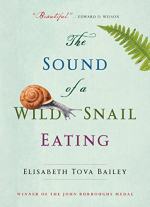|
This section contains 736 words (approx. 2 pages at 400 words per page) |

|
Summary
Chapter 11: Elisabeth is very worried when her snail overeats, not knowing how she will survive her illness without its companionship. Thankfully, it recovers quickly. In the wild, snails are foragers who are primarily nocturnal. Elisabeth's snail can travel a great distance in proportion to its size, which highlights her current immobility. As the months pass, it is harder for Elisabeth's friends to visit as frequently. She feels connected to other people who are solitary and homebound by illness, even though she does not know them.
Chapter 12: Elisabeth remembers a time when she was in better health and accidentally stepped on a slug that her cat had brought into her house. The slug defends itself with slime and Elisabeth wonders what she would defend herself with if threatened by a much larger creature. Evolution is shaped in part by pathogens that rearrange...
(read more from the Part 4: The Cultural Life Summary)
|
This section contains 736 words (approx. 2 pages at 400 words per page) |

|




